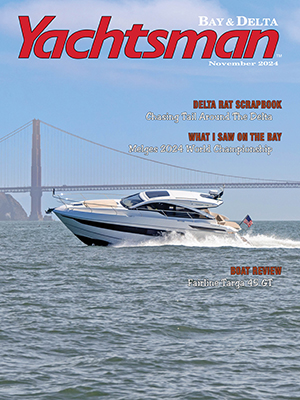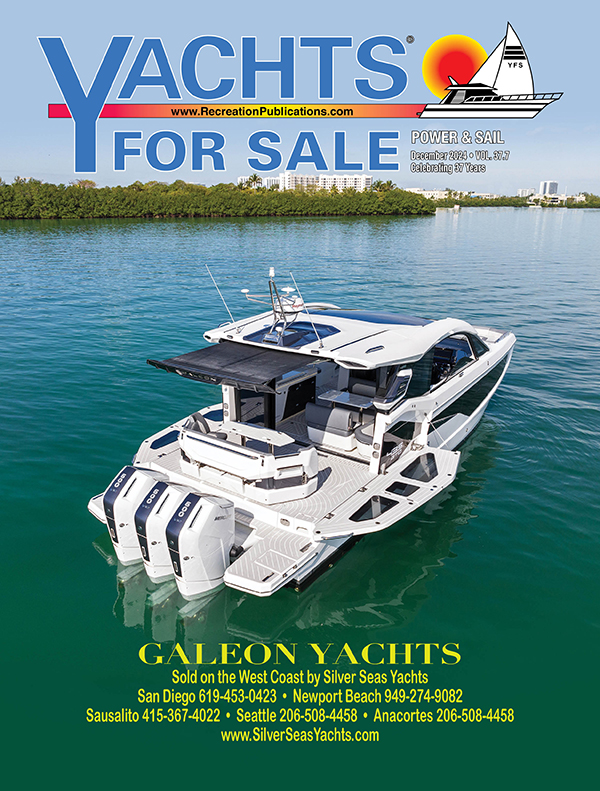Lessons Learned – by Pat Carson

Hazards Of The Sea
A question I am often asked is, “do I worry about debris in the ocean when making coastal deliveries, especially when running a vessel at night?” A usual follow-up question is, “what about those lost containers that are floating beneath the surface just waiting for you to run in to them?” The short answer is yes, there are many hazards to avoid in the Pacific Ocean. However, with good voyage strategies you can minimize the risks. For example, we know that the vast majority of crabbing gear is in water less than 100 fathoms. If you are planning to run a vessel overnight, you should make certain that your depth between sunset and sunrise is greater than 600 feet, and if you’re planning to make a fuel stop then plan for arrival during daylight hours. The heaviest concentration of pots is in water less than 50 fathoms, and the concentration is greater as you get closer to one of the ports. In Washington, the crab season is year-round along the pacific coast from the Columbia River to Cape Flattery. Inside Puget sound there is a specific season, but that changes every year. In Oregon coastal waters, crab season is also year-round, but is usually closed in October and November. In Northern California, the crab season traditionally starts on Nov. 15, and in the San Francisco area the season traditionally starts Dec. 1. Pink shrimps are found in the Pacific Ocean coastal waters from the Canadian border to the central coast of California. However, nearly 75 precent of the entire catch takes place off the Oregon coast in waters less than 50 fathoms. The season runs from April 1 to Oct. 31.

I never plan to transit Puget Sound or the Straits of Juan de Fuca in restricted visibility due to the large amount of floating debris. Last winter, the Northwest seemed to have a firehose aimed directly at Seattle and the surrounding area, creating 100-year floods in many of the rivers. This extreme flooding brought so much debris into Puget Sound that I did not make any winter voyages that began or ended there.
I do know of a boat owner who hired a delivery captain to take his boat into Puget Sound last November and they discovered the reason I declined the assignment wishing to not risk any potential damage to the client’s yacht. They had decided to run the boat at night using a bright foredeck light to help them pick their way through the floating debris. It was slow all-night progress, but they ultimately made their intended port in Seattle.
Lost Containers
The first question is, why are containers lost at sea, and the second question is, what happens to them. The World Shipping Council (WSC) reported that an average of 1,382 containers were lost at sea between 2018 and 2019. The worst year occurred in 2013 when the MOL Comfort sank in the Indian Ocean with a loss of 4,293 containers. Another spike happened between Nov. 2020 and April 2021 when it is estimated that nearly 3,000 containers were lost in the North Pacific in five separate incidents. That is double the annual average in a matter of weeks.

Shipping containers are mostly made from steel and come in two principal sizes, 20- or 40-foot lengths. 20-foot equivalent units or TEUs are easier to fit on ships, trains and trucks for intermodal transportation. There are 11 types of containers and the dimensions can vary slightly. While most are simply a basic box, reefers are usually insulated and contain refrigeration units for the shipment of frozen foods, vegetables, pharmaceutical and medical products and other perishable items. Others can be adapted to fit tanks for the shipment of liquids.

The capacity of container ships has increased three-fold in the last 20 years from 8,800 TEUs in 2002 to ships delivered in 2020 that have a capacity of nearly 24,000 TEUs. Currently, the largest container ship is the EVER ACE, which has a capacity of 23,982 TEUs, is 1,312 feet long, 201 feet wide and draws 48 feet.
There are more than 6,000 ships carrying containers around the world at any point in time. In previous surveys, WSC asked members to distinguish between losses that occurred because of a catastrophic event on a single sailing, defined as one where 50 containers or more were lost in a single incident, and non-catastrophic losses. Containers lost overboard represent less than one thousandth of 1 percent of the roughly 226 million containers currently shipped each year.

The rise in accidents and containers lost overboard has several causes. Weather is getting more unpredictable, ships are larger allowing for containers to be stacked higher and increased demand for goods has increased the number of sailings. The increased demand means that these ultra large container ships are operating at nearly full capacity and may be less stable in rough weather.
Gale-force winds and large waves buffeted the 364-meter (that is nearly 1200 feet) ONE OPUS in Nov. 2020, and caused the loss of more than 1,800 containers. Photos showed thousands of steel boxes strewn like Lego pieces across her deck, some torn to metal shreds. At an average of $50,000 per box, the ONE OPUS was estimated to have lost $90 million in cargo.

The incident was the worst since 2013 when the MOL COMFORT broke in two and sank in the Indian Ocean with its entire cargo of 4,293 containers.
In January, the MAERSK ESSEN lost about 750 boxes while sailing from Xiamen, China to Los Angeles. A month later, 260 containers fell off the MARESK EINDHOVEN when it lost power in heavy seas. Nearly all the recent incidents have occurred in the Pacific Ocean, a region where the busiest traffic and the worst weather collide. The sea route connecting the economies of Asia to consumers in North America was the most lucrative for shipping companies last year.
In 2021, the international shipping industry transported approximately 226 million containers, with cargo transported valued at more than $4 trillion. Proper packing, storage and securing of containers and reporting of correct weights are especially important to the safety of a container ship, its crew, cargo, shore-based workers, equipment and the environment. Misdeclared container weights have contributed to the loss of containers at sea, as well as other safety and operational problems. The International Maritime Organization, IMO, is outlining specific procedures and techniques to improve safety, such as how to ensure correct distribution of the weight inside the container, proper positioning on board the ship and proper blocking and bracing based on the type of cargo. Also, under review by the IMO are the container stacking strength requirements, noting that the existing discrepancy might have significant safety implications including collapsed container stacks and containers lost at sea.

Even with proper packing of the cargo into the container, correct container weight declaration and proper storage and securing aboard the ship, several factors ranging from severe weather and rough seas to more catastrophic and rare events like ship groundings, structural failures and collisions can result in containers being lost at sea.
Reporting And Recovery of Lost Containers
Currently, there are no requirements that ships report containers lost at sea unless the contents contain dangerous material. WSC is a cosponsor of a submission to IMO’s Maritime Safety Committee (MSC) 102 by the European Union with a proposal for a new regulation on the mandatory reporting of containers lost at sea. The shipping industry supports such a mandatory reporting requirement and will continue to advocate for an early implementation of an effective and practical requirement.
Closer to home are lost containers that impact our voyages along the west coast of Canada, the U.S. and Mexico. For example, the loss of containers from the ZIM KINGSTON in the Straits of Juan de Fuca in Oct. 2021. The ship boarded cargo in South Korea and was destined for the port of Vancouver. Shortly before arriving to the West Coast, heavy weather caused the loss of 109 containers overboard. Then, on approach to Vancouver Island, fire broke out in the damaged containers, some of which carried dangerous cargo.

It is believed that most of the lost containers sank. However, four of them washed ashore on the northern part of Vancouver Island several weeks later. Debris included Styrofoam, refrigerators, consumer products and packaging materials. Clean-up crews were contracted and dispatched by the company that manages the ship. The Canadian Coast Guard actively monitored the situation and provided regular updates on the status of the ship and the lost containers.
Most containers sink quite rapidly once they hit the water. But depending on their contents, they may stay afloat for days or even weeks before sliding beneath the surface. This process can take even longer for refrigerated containers on account of their buoyant insulation. For example, one container that washed into the Atlantic off the coast of France rode the waves for 11 months before finally being deposited on the southern coast of Great Britain. What are the risks to us? While there are sporadic reports of yachts striking submerged objects and sinking, hard data is difficult to obtain. When we do get reports, it is not always clear what object was struck. A semi-submerged container is not likely to be seen on RADAR, especially if there are large swells or waves. For the future, the IMO and WSC, with support of 27 of the EU countries are working on developing a measure regarding the detection and mandatory reporting of containers lost at sea. This measure may enhance the positioning, tracking and recovery of containers. But for today, the risk is real but small. You should operate at a safe speed and keep a proper lookout.
As the debris fields in the Northwest clear, I will stay close to San Francisco enjoying a good glass of port and a fine cigar and make deliveries to the south. Until next month, please keep those letters coming. If you have a good story to tell, send me an email at patcarson@yachtsmanmagazine.com. I love a good story.



